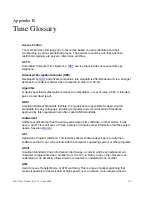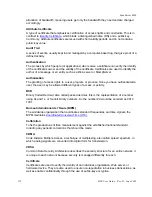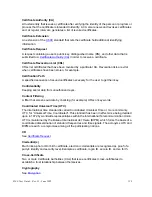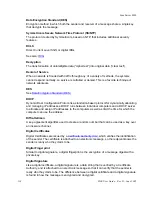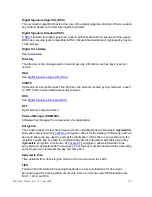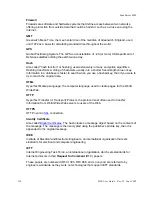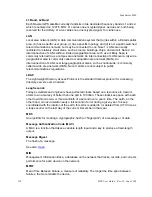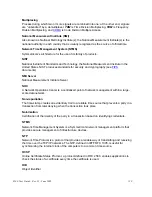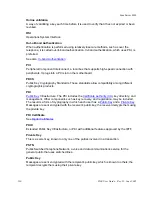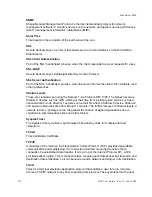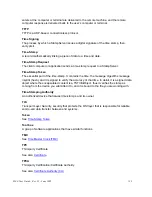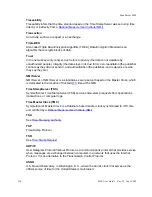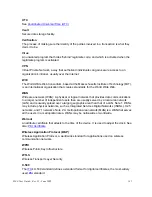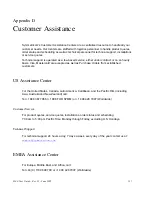
122
S100 User Guide – Rev. D – June 2005
SyncServer S100
allocation of bandwidth, meaning users get only the bandwidth they need and are charged
accordingly.
Attribute Certificate
A type of certificate that emphasizes certification of access rights and constraints. This is in
contrast to
Identity Certificate
, which binds a distinguished name (DN) and a public key.
Commonly, attribute certificates are issued with short validity periods and do not contain a
public key value.
Audit Trail
A series of events, usually kept in and managed by a computer-based log, that give proof of a
defined activity.
Authentication
The process by which people (or applications) who receive a certificate can verify the identity
of the certificate’s owner and the validity of the certificate. Certificates are used to identify the
author of a message or an entity such as a Web server or StampServer.
Authorization
The granting of access rights to a user, program, or process. Once you have authenticated a
user, the user may be allowed different types of access or activity.
BCD
Binary Coded Decimal. Also called packed decimal, this is the representation of a number
using 0s and 1s, or four-bit binary numbers. So the number 29 would be encoded as 0010
1001.
Bureau International de l’Heure (BIPM)
The worldwide organization that coordinates standard frequencies and time signals, the
BIPM maintains
Coordinated Universal Time (UTC)
.
Calibration
To fix the graduations of time measurement against the established national standard,
including any periodic corrections that should be made.
CDMA
Code Division Multiple Access, a technique of multiplexing, also called spread spectrum, in
which analog signals are converted into digital form for transmission.
CDSA
Common Data Security Architecture describes the security structure for an entire network. It
is unique to each network because security is managed differently for each.
Certificate
Certificates are used to verify the identity of an individual, organization, Web server, or
hardware device. They are also used to ensure non-repudiation in business transactions, as
well as enable confidentiality through the use of public-key encryption.
Summary of Contents for SyncServer S100
Page 2: ...2 S100 User Guide Rev D June 2005 1 ...
Page 20: ...12 S100 User Guide Rev D June 2005 1 SyncServer S100 ...
Page 60: ...52 S100 User Guide Rev D June 2005 SyncServer S100 ...
Page 94: ...86 S100 User Guide Rev D June 2005 SyncServer S100 ...
Page 108: ...100 S100 User Guide Rev D June 2005 SyncServer S100 Figure 5 43 Large Net NTP Configuration ...
Page 109: ...S100 User Guide Rev D June 2005 101 2 5 3 Figure 5 44 Large Net NTP Configuration 2 ...
Page 116: ...108 S100 User Guide Rev D June 2005 SyncServer S100 ...
Page 126: ...118 S100 User Guide Rev D June 2005 SyncServer S100 ...
Page 150: ...142 S100 User Guide Rev D June 2005 1 SyncServer S100 ...
Page 166: ...158 S100 User Guide Rev D June 2005 1 SyncServer S100 ...














